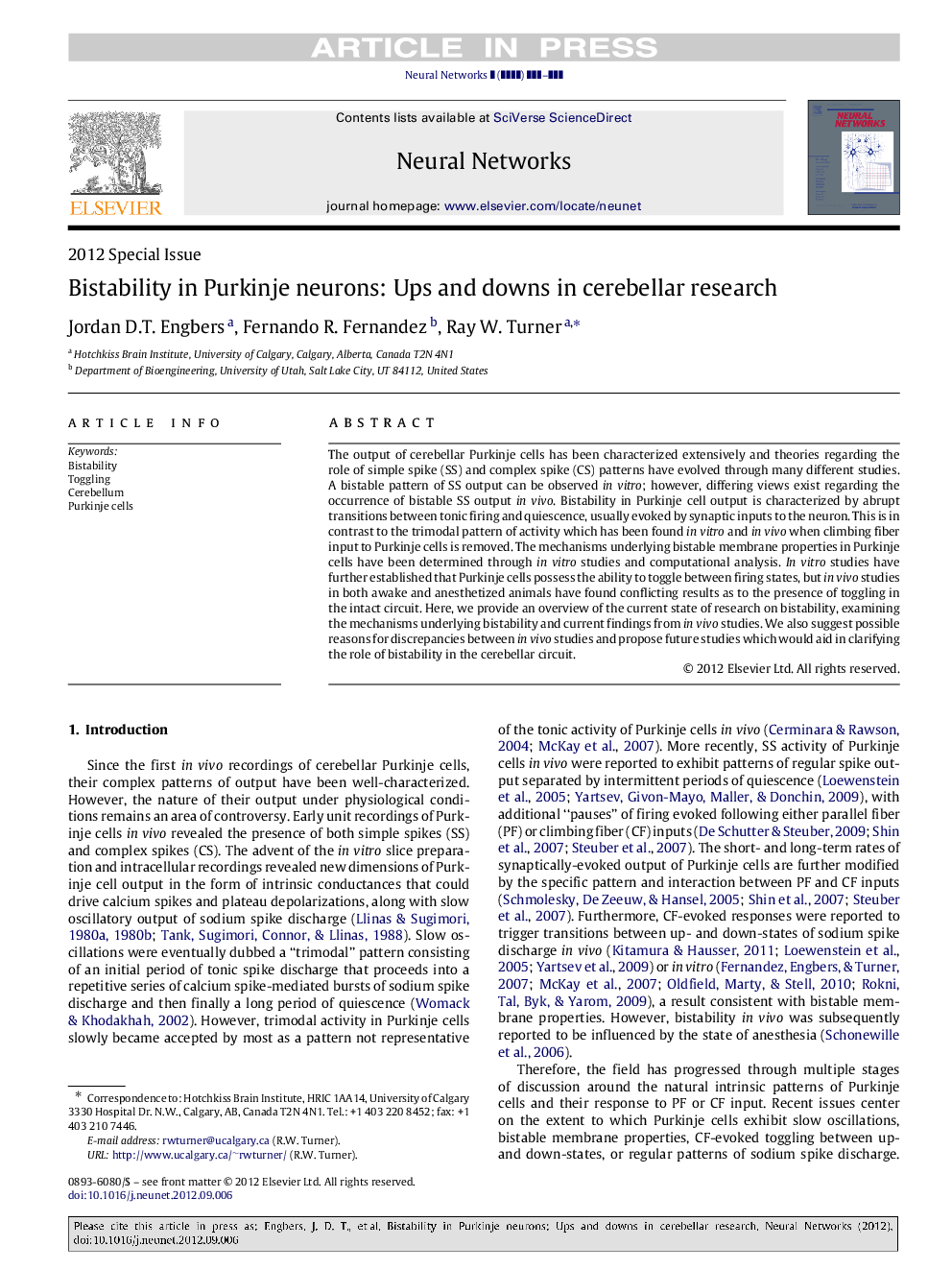| Article ID | Journal | Published Year | Pages | File Type |
|---|---|---|---|---|
| 6863348 | Neural Networks | 2013 | 14 Pages |
Abstract
The output of cerebellar Purkinje cells has been characterized extensively and theories regarding the role of simple spike (SS) and complex spike (CS) patterns have evolved through many different studies. A bistable pattern of SS output can be observed in vitro; however, differing views exist regarding the occurrence of bistable SS output in vivo. Bistability in Purkinje cell output is characterized by abrupt transitions between tonic firing and quiescence, usually evoked by synaptic inputs to the neuron. This is in contrast to the trimodal pattern of activity which has been found in vitro and in vivo when climbing fiber input to Purkinje cells is removed. The mechanisms underlying bistable membrane properties in Purkinje cells have been determined through in vitro studies and computational analysis. In vitro studies have further established that Purkinje cells possess the ability to toggle between firing states, but in vivo studies in both awake and anesthetized animals have found conflicting results as to the presence of toggling in the intact circuit. Here, we provide an overview of the current state of research on bistability, examining the mechanisms underlying bistability and current findings from in vivo studies. We also suggest possible reasons for discrepancies between in vivo studies and propose future studies which would aid in clarifying the role of bistability in the cerebellar circuit.
Keywords
Related Topics
Physical Sciences and Engineering
Computer Science
Artificial Intelligence
Authors
Jordan D.T. Engbers, Fernando R. Fernandez, Ray W. Turner,
